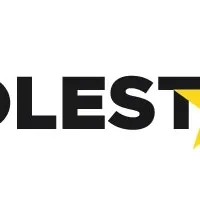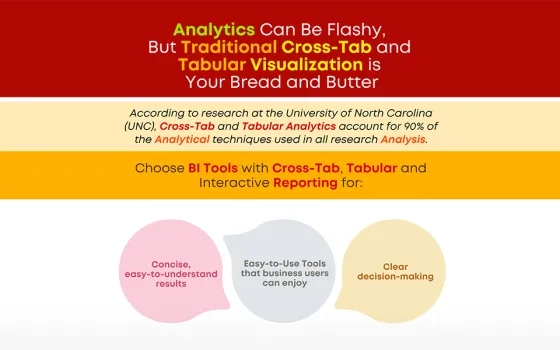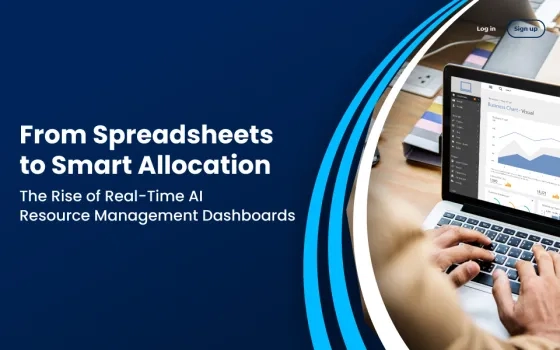“Data-driven organizations are 23 times more likely to acquire customers, 6 times as likely to retain customers, and 19 times more profitable” – as per McKinsey Global Institute survey.
Today, we live in a time where technology is everywhere and influences, if not dictates, all major aspects of our lives. Technology touchpoints create data. Data presents itself to analysis via the art of Data Analytics. Organizations have started to realize the benefits of analytics across functions. But even though most companies leverage Data Analytics in some way, the effectiveness of such initiatives is hard to be quantified.
That raises the question - are there establishment issues or challenges while establishing the entire analytics function?
Let us talk about the key challenges faced from Establishment to Governance.
How is Establishing an Analytics Function Different from Other Functions?
Organizations have evolved in a way where most functions operate independently with some touch points with other functions. People think they can replicate the same with data and analytics. However, data and analytics, should have a different engagement model. To deliver the most value to each function, the data and analytics organizations need to be deeply coupled throughout the organization matrix.
More than setting up a data and analytics organization/function it is a massive cultural change for the entire organization to think about data and analytics.
It is not vastly different from the sustainability discussions that are so relevant in today’s economy. Driving ESG goals is not just a problem for Chief Sustainability Officers, rather it is the responsibility of every business, region, team, employee, and customer. Sustainability needs to become part of the organizational DNA. In a comparable way, the entire organization must become data literate to lend success to the data and analytics function.
To generate the most effective data analytics function, organizations may consider adopting a hybrid between a centralized and decentralized model. You can better understand it as a hub and spoke model. At the centre of the hub can be the data analytics organization, reviewing the entire data estate available, and doing the technical and functional part of the insight generation. At the spokes, you can have the business functions actively engaging with the central Analytics function to pull the right models, insights, and reports to help business users.

Another concern that most organizations have is that they already have some sort of reporting and dashboard system in practice which has been acting as a proxy for data analytics for at least 20 years. Though dashboards are everywhere – you need to ask – how many are actively being used to drive decisions? One of the reasons for the limited adoption of data-driven decision-making is that creators of reports and dashboards have been trying to push the analytics to business users with limited success.
Where a data and analytics function can succeed where many other models have failed is to collaborate better with business users and create a pull effect. We need to understand the business better and build the reports, metrics, and dashboards, present the data in such a compelling way, and author the story in such an engaging way that business users will come to the data & analytics function to get the insights and ask what else can you do for me!
5 Key Challenges Faced in Establishing Data and Analytics Function
While there can be many challenges that organizations face while implementing technology or processes, majority of them can be clubbed under 5 areas:
-
Building a culture of analytics
-
Finding relevant data
-
Data Estate development
-
Prioritization of Analytics use case
-
Ownership of Analytics use case

Out of all the challenges in such a shift from a push to a pull model of analytics – culture can be seen as the biggest hurdle. Organizations still trust experience, instinct, and comfort a lot more than data. They say “Data is the new Oil” – but very few have been pumping this oil in their trucks called business. Leaders frequently make decisions based on perceptions, hunches, or gutfeel rather than data.
There would be exceptions which though not based on facts, logic, and data would be fruitful like Gandalf selecting a hobbit to take the ring to Mordor. But this is not a rule, just an exception.

While instinct works, establishing a culture of data-backed decisions can bring more visibility, rationale, and governance into the organizational functions. As mentioned above, establishing this culture of data-driven decision-making throughout the organization is the biggest deterrent for an analytics function. This can be improved by encouraging, recognizing, and rewarding everyone from the team members to leaders to build data-backed decisions.
Employees at all levels of an organization must be trained about their roles and processes of working with an Analytics Center of Excellence.

Source: McKinsey
Let us take a deep dive into the other four challenges:
The obvious challenge in initiating a successful analytics program is access to the right, reliable, timely, high-quality data. Somehow, it seems, as soon as teams/organizations/ leaders gain control of their data sources, 100 more sources present themselves resulting in a never-ending backlog of data sources to assimilate into your analytic ecosystem. The only way to get out of this chase is to stop chasing the data and chase the value instead. Not all data can become useful in one day.
Identifying the end objective and then managing the data sources that can help you achieve the end goal might be a more meaningful approach.
The next problem comes with the assimilation of data sources from the multiple sources identified for use in a unified system where data can be connected, cleansed, and transformed for further processing. Various cloud platforms like Azure, AWS, and GCP are extremely competent in this activity.
But you need to select the one which is suitable for your current and future needs and that goes with your current/future ecosystem and architecture.
Now that you have figured out what data to use and how to get it – the next challenge is to figure out what to do with it. There are zillion analytics use cases that require your attention – the challenge is to pick a few meaningful initiatives that can create an impact. It is like the saying ‘Dream big, start small and scale fast.’
This “start small” is a key step in the process because it gives people an opportunity to get familiar with the data, systems, and method of working and gives a sense of accomplishment in the short term.
The final and one of the most important and underrated challenge is the ownership of analytics use case. Analytics use case is rarely considered done after initial calculations and analysis. One needs to keep working on a scenario to look for optimization opportunities, and utilization of advanced technologies such as ML to the existing models to improve the level of value that can be derived.
An ideal function to be the gatekeeper of such use cases would be the Data and Artificial Intelligence Office (DAO). They are expected to be at the forefront of the analytics technologies and keep engaging with businesses in the hub and spoke model discussed earlier. Due to these reasons, they may be best suited to own the analytics use cases and ensure they are being used and improved over the long run.
As such establishing the gatekeepers for knowledge, data, and analytics can ensure that the models are developed over time and governance practices are always upheld.
The Importance of Data Governance for Organizations
Now that we have spoken about the challenges – let us look at the key process that ensures all the established steps and controls are safe, secure, and consistent i.e., data governance.
Data governance refers to the procedures, policies, and access controls around the usage of that data which the IT organization has collated with so much pain. Governance will define how long the data is useful or relevant, is the data of a sufficient quality to make a business judgment, who owns the data, who should have access to the data, how long should the access continue, and procedures to archive or purge the data when its useful life is over.
Side Note: How Data Governance is Different from Data Management
In common business language data management is the task of collecting data from the point of generation and taking it all the way to the end where it may be useful to someone for consumption. All the steps in the interim such as ingesting it in centralized IT infrastructure, transforming it, storing it, cleaning it, integrating it, and sending it to the endpoint system are part of data management. All this is usually the CIO territory.
Data governance, on the other hand, refers to the procedures, policy, access controls around usage of that data which the IT organization has collated with so much pain. Governance will define how long the data is useful or relevant, Is the data of sufficient quality to make business judgment, who owns the data, who should have access to the data, how long should the access continue and procedures to archive or purge the data when its useful life is over. Data Governance usually belongs to the newly found CDO, CAO, CDAO roles
The importance of governance may be better understood in the hypothetical scenario of when no governance is available.
In the absence of data governance, all data is available to everyone with limited guard rails. Customer PII information is poorly protected, and business end users have access to overwhelming amounts of data and information making it difficult to understand how to utilize data. It will be like all finance, sales, inventory, raw material, and market research data available in excel files and kept on a share point site. Employees must figure out what data to use and how. Though this sounds like a scary picture, in fact, organizations were not operating much differently than this until the early 2010s. Only in the past few years has data governance taken centre stage in helping organization structure and methodically present the data for business user consumption.
In Conclusion
Though it sounds like a lot – the point is that establishing a data and analytics function is not like establishing other functions and it needs the time, effort, interest, and involvement of all the other functions. After ensuring this, you need to make sure you have at least some ideas about what you want to do with your data and then check about data sources and how to ensure data quality. Then you can think about analytics implementation.
If you are confused about data and analytics establishment at any junction and are looking for expert advice. Then we can help you with it. Check out our data analytics expertise and get back to us.
Author: Siddharth (Sid) Poddar — Senior Vice President, Industry Head - CPG & Retail — Polestar Solutions
















